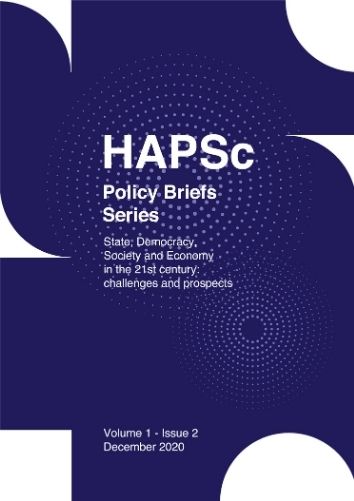The Evolution οf War Conflicts. The Fourth Military Revolution (RMA) & Operational Applications
Abstract
The phenomenon of War, historically could be characterized as multidimensional. War, that is, the confluence of military forces, over the course of the Centuries, has differed in terms of Strategic Concept, in terms of Doctrine of Operations, and in terms of technological capabilities. At the heart of the new form taken by the phenomenon of war is the possibility of mass collection and utilization of information, in combination with the technological development of weapons systems. New technologies have also attracted the doctrines of military operations. Traditional military forces, but also emerging ones, are at the forefront of new developments in the field of war.
Article Details
- Zitationsvorschlag
-
Paounis, N. (2020). The Evolution οf War Conflicts. The Fourth Military Revolution (RMA) & Operational Applications. HAPSc Policy Briefs Series, 1(2), 279–285. https://doi.org/10.12681/hapscpbs.26523
- Rubrik
- Articles

Dieses Werk steht unter der Lizenz Creative Commons Namensnennung 4.0 International. Authors retain copyright and grant the journal right of first publication with the work simultaneously licensed under a Creative Commons Attribution License that allows others to share the work with an acknowledgement of the work's authorship and initial publication in this journal.
Downloads
Keine Nutzungsdaten vorhanden.
Literaturhinweise
Anand, D., Raja, Ch. and Rajan, Dr. E. G. (2011). Network Centric Warfare, Concepts & Challenges. CiiT International Journal of Networking and Communication Engineering, 3 (14): 898-902.
De Vries, A. (1997). Information Warfare and its Impact on National Security. Newport, Rhode Island: Naval War College. Available at: https://www.hsdl.org/?view&did=459698 (Accessed: 30/11/2020).
Gettinger, D. and Michel, H. A. (2017). Loitering Munitions in Focus. Bard College: Center for the study of the Drone.
Grivas, K. (2013). The Military Rise of China and the Geopolitics of War in the Middle East. Athens: Livanis Publications [in Greek].
Grivas, K. (2019). The New Military Revolution and the Greek Defense Strategy. Athens Livanis Publications [in Greek].
Johns Hopkins Applied Physics Laboratory (1995). The Cooperative Engagement Capability. Johns Hopkins APLS Techical Digest, 16(4)377-395.
Kimball, D. and Kingston R. (2019). The Intermediate Range Nuclear Forces (INF) Treaty at a Glance. Arms Control Association. Available at: https://www.armscontrol.org/factsheets/INFtreaty (Available: 30/11/2020).
Kopp, C. (2008). Understanding Network Centric Warfare. Australian Aviation, 101(19): 168-171.
McCallion, J. (2021). What is Cyber Warfare? IT pro. Available at: https://www.itpro.co.uk/security/28170/what-is-cyber-warfare (Accessed: 30/11/2020).
Ottis, R. (2008). Analysis of the 2007 Cyber Attacks against Estonia from the Information Warfare Perspective. Proceedings of the 7th European Conference on Information Warfare and Security, Plymouth, 2008. Reading: Academic Publishing Limited, pp. 163-168.
Palermo, E. and Cox, L. (2014). Who Invented the Internet. Live Science. Available at: https://www.livescience.com/42604-who-invented-the-internet.html (Accessed: 30/11/2020).
Paounis, N. (2018). The Net Centric Warfare (NCW), Platforms and International Experience. ELIAMEP, 95: 3-9 [in Greek].
Paounis N. (2019). Info Based Warfare & Cyber Security. ELIAMEP, 99: 1-9 [in Greek].
Tsai, S. X. (1996). Introduction to the Scene Matching Missile Guidance Technologies. National Air Intelligence Center. Available at: https://apps.dtic.mil/dtic/tr/fulltext/u2/a315439.pdf (Accessed: 30/11/2020).



